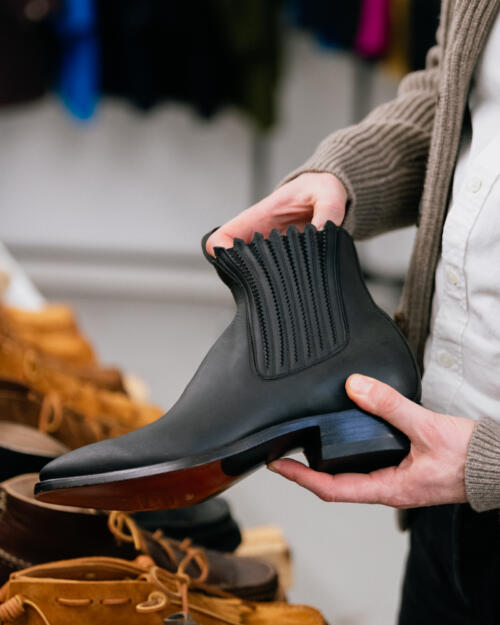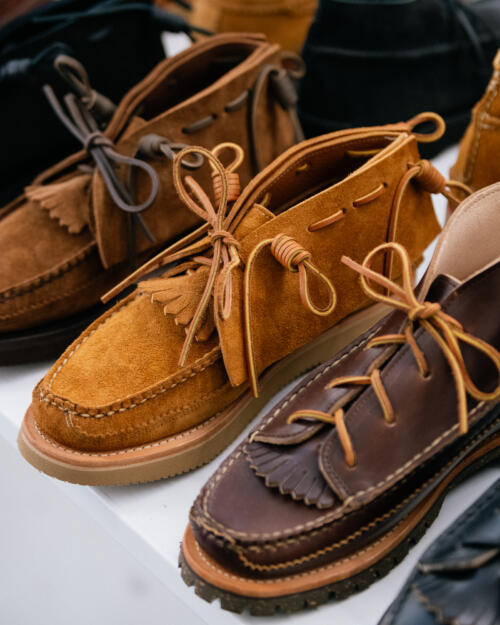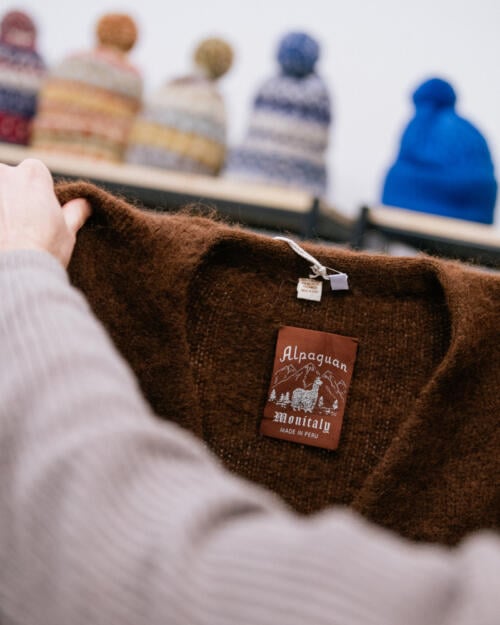
Last week I wrote about visiting the Paris trade shows for the first time, and being able to interview some new brands as a result. Today I’m going to highlight three that we found particularly interesting.
The first is Yuketen, the craft-based shoemaker run by Japanese designer Yuki Matsuda (below).
Yuki is known primarily for making American-style moccasins and boots, to a high level. He uses materials such as Horween leather and hand-sews the moccasin stitch on the upper – basically, the Japanese approach to quality applied to this traditional style of shoe.
It’s part of a bigger group called Meg Company (named after Yuki’s wife Megumi) that includes Chamula, Epperson Mountaineering and Monitaly (named after his daughter Monica). The Yuketen range includes some more fashion-y designs, but there are also always classic boots, moccasins and loafers.
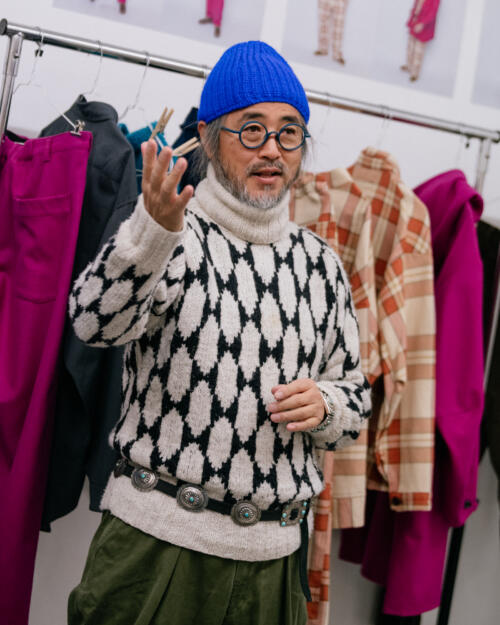
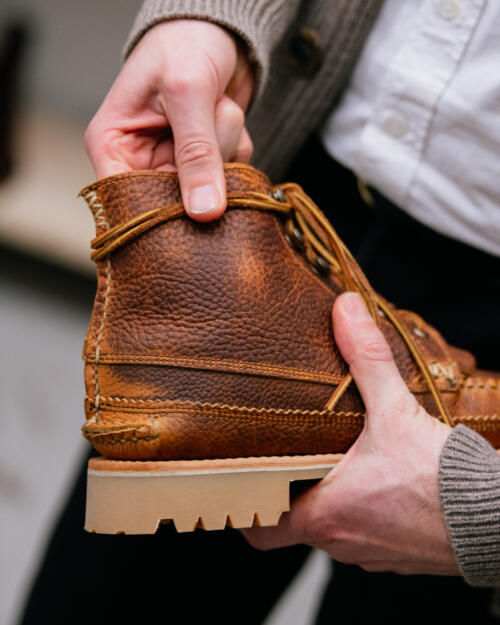
“I’ve been in the business since 1985, but ran a vintage operation for a few years before I started Yuketen,” Yuki told us. “I think a lot of companies start this way – they want to recreate the vintage that they see but can’t buy any more.”
Yuki has just had to move some of the production to Italy, because one craftsman retired that did a lot of the hand sewing. “The stitch up the back seam on the boots was the hardest thing,” he says (shown on the boot above). “Nobody else could do that. But there are advantages to doing some things in Italy now – channel stitching on a sole is impossible to do in the US at a decent price for example.”
I have a pair of Yuketen Bluchers – the ones with the camp sole and little kiltie on the laces – and you really feel the quality of the leather compared to other moccasins, boat shoes and the like. The sole is thin – you wouldn’t want to be walking on concrete all day in them – but they’re incredibly comfortable.
Style wise, this is a category of shoe I’d like to cover more. It can look a little old-mannish, but it’s also a nice option for something that is very easy and very comfortable, more casual than most boots or loafers, and not a trainer. I find the key to avoiding the old-fashioned associations is wearing them with clothes that are not in that mould. Eg western wear, sportswear, and less trad colours.
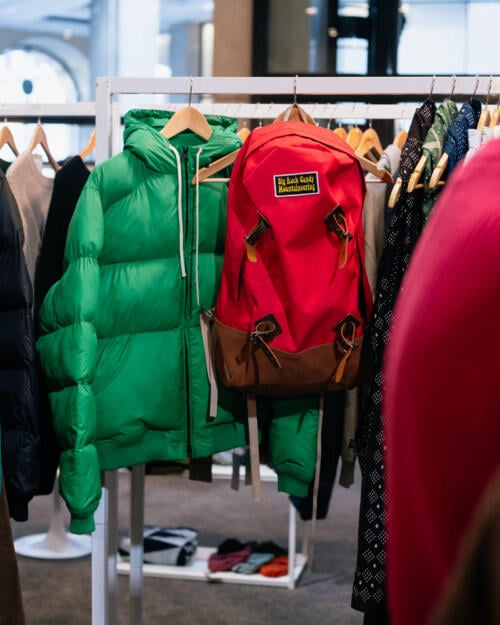
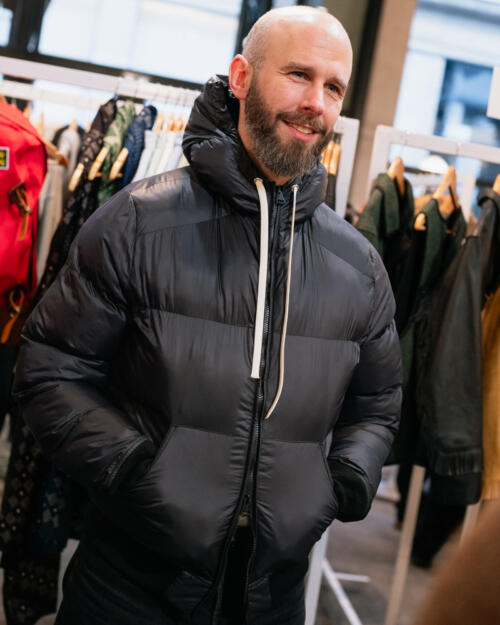
The second brand we spent a long time talking to was Wythe. We covered Peter Middleton’s company last year, after we visited their new store in New York. But this was an opportunity to see all the new things, plus a new brand Peter has started, Big Rock Candy Mountaineering (BRCM, above).
BRCM leans into the colourful, playful side of the American outdoor clothing that people have been mining in recent years. “There was this great scene in the 1960s and 70s in Yosemite and elsewhere, of a real lifestyle around climbing,” says Peter. “The clothes were a bit random, often homemade, and there was a lot of colour.”
BRCM was launching at Man/Woman in Paris, with orders being taken for the Autumn – so there’s nowhere currently selling it online (see previous article for how the industry works in this regard). But the images here give a sense of the aesthetic; there’s also a little climbing dude printed on the tees and sweats that reminds me of a Robert Crumb character.
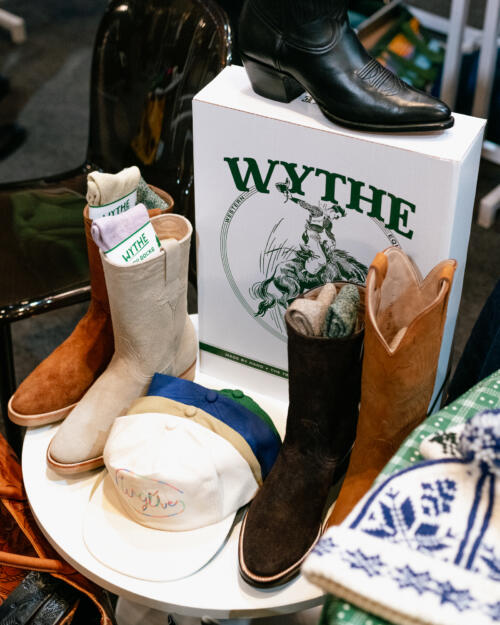
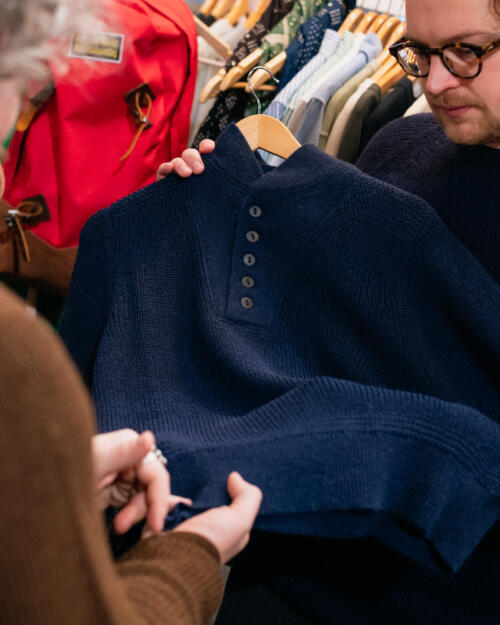
The quality is not necessarily what most PS readers will be aiming for – the black jacket I’m wearing has a synthetic fill and will retail for $288. The chinos are $198.
But some others have a down fill, and the designs are great. I love exploring the clothing that comes from a period and a place I didn’t know before – like the double-knee climbing trousers with big store pockets on the back, which became more and more threadbare as climbers used them, almost as a point of pride.
The rest of the Wythe range includes some half-button knits (above) that are an old design but you don’t see much. A nice alternative to a half-zip. And there were hats, boots and fringed leather jackets.
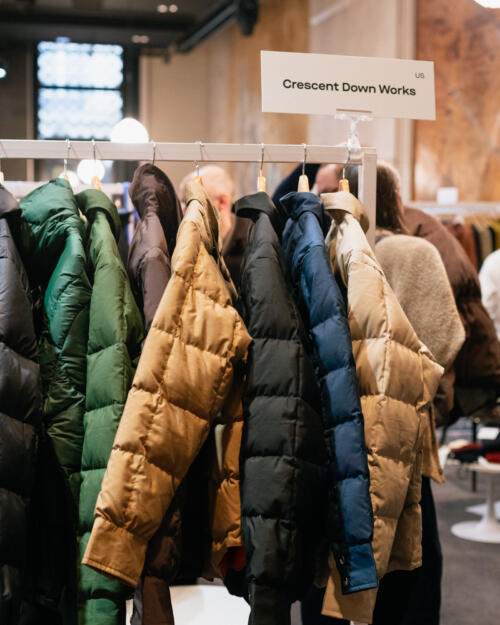
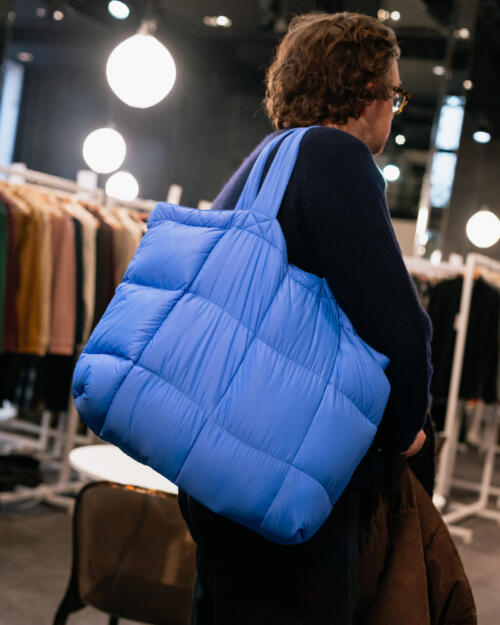
The last brand it was good to see was Crescent Down Works, also in the main room at Man/Woman. That room had such a great selection of interesting outdoors brands such as Viberg, Merz b Schwanen, Goldwin and Nanamica, most of whom don’t show at Pitti.
I knew Crescent Down Works vaguely, and readers have brought them up a few times in comments. Our photographer Alex had also bought a popping purple gilet from them when we travelled to Korea last year.
But I didn’t realise they have been around since 1974, or that the founder originally helped pioneer down at Eddie Bauer – timely, given our recent piece on them. “It was my mum’s brand, and now we run it together with my brother,” Annie Michelson told us. “We still make everything ourselves in Seattle.”
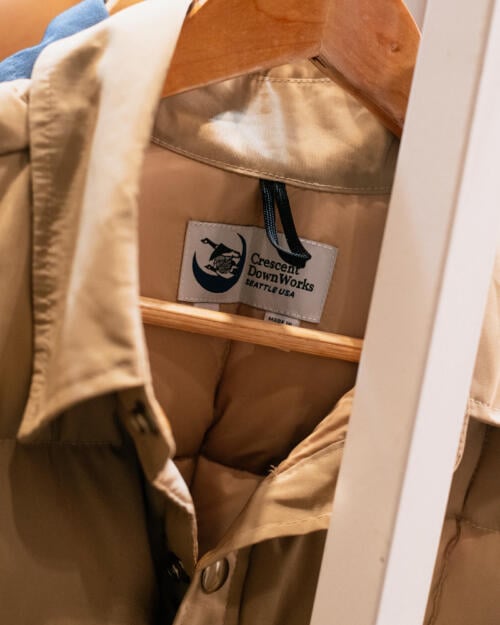
Apparently there are only three manufacturers of down products left in the US, and the other two are much more technical. Crescent has stayed rooted in its original product, which has made it more of a leisure offering over time. “We’re technical, just 1980s technical,” Annie said. “Whether that’s enough for you depends on what you need the clothing for.”
The pieces are made quite simply too, but we’re talking £289 for a down gilet, so it’s a chunk cheaper than something like Rocky Mountain Featherbed. There are also options with cotton/nylon outers rather than just nylon, similar to the Bauer Skyliner.
The styling on their website is also nice – simple but stylish. I like the fact that the products are grouped by colour rather than category, perhaps because it suggests there is a design pricess at work there, not just a manufacturing one.
“All the down we use these days is recycled,” Annie added. “It helps that there are some really big brands now who often have excess, like North Face. We can use all their surplus and make sure it doesn’t go to waste.”
Apparently Crescent are only at Paris every two or three years, so it was great to catch them.
